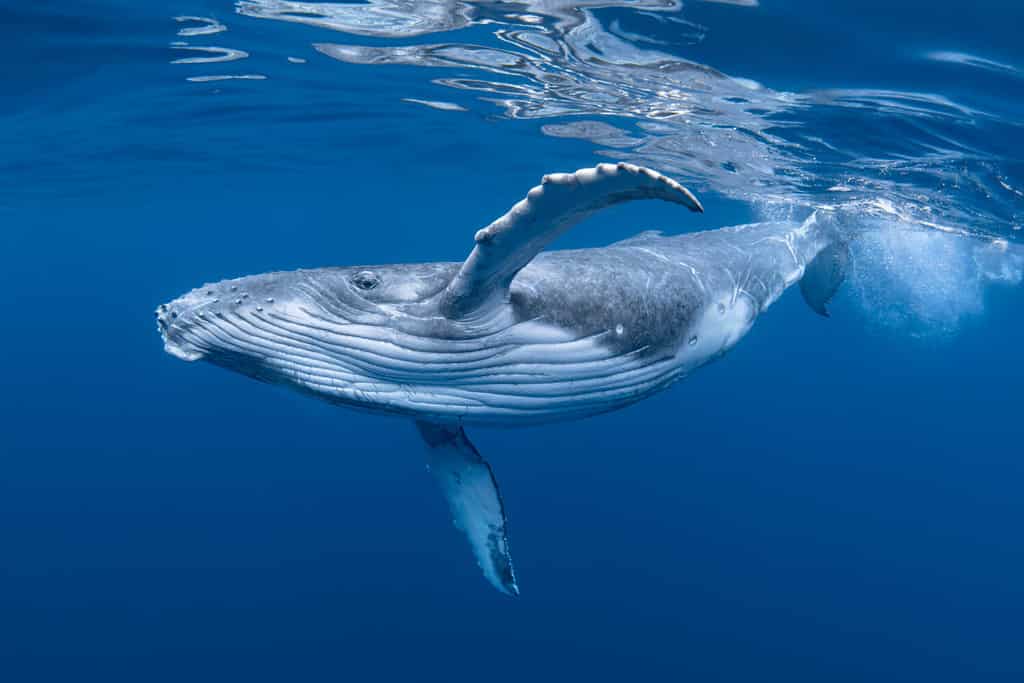Filmed off the coast of San Diego, California, and with nearly 1.5 million views already, this is THE video that will make you fall in love with blue whales, if you are not already! Relax and enjoy seven and a half minutes of drone footage of these magnificent creatures – from a distance and sometimes close up – set to a wonderful soundtrack. Their elegance and beauty are unrivaled!
See the Majestic Blue Whale in the Video Below!
Magical Monsters of the Oceans
There is something very special about blue whales, the gentle giants of the oceans. They are found all over the world (in subtropical and polar waters)
and are the largest animals on earth growing to 100 feet in length and living for up to 90 years.
Despite their huge size, the narrow shape of their body allows them to slice through the water with comparative ease. Their large, powerful tails with two rubbery flukes propels them forward very efficiently.
Blue whales are a baleen whale which means that they have numerous (270 to 400) bristle-like baleen plates instead of teeth. These filter food such as krill and small fish and crustaceans. Because they are so big, these guys need a lot of food to keep them going – around 6 tons of krill per day. However, the amount they eat every day is very variable. They spend the summer months in cooler waters to breed and eat a huge amount at this time. Then, they migrate to warmer waters over the winter where they eat very little.

Because they are so big, blue whales consume around 6 tons of krill per day.
©Craig Lambert Photography/Shutterstock.com
The Plight of the Blue Whales
It is estimated that there are 25,000 blue whales in our oceans but this is just a fraction of the 350,000 population of 200 years ago. So, what happened?
The losses are mainly down to whale hunting which started in the 1800s. As the design of whaling harpoons got more sophisticated, the number of whales killed per year increased. Whale populations were decimated until, finally, some controls were introduced in the 1960s. However, their situation remained precarious and further controls were needed. As of 2022, the International Union for Conservation of Nature classifies them as endangered.
Ship strikes also contribute to the loss of blue whales but is not a major factor.
A more important factor is that krill numbers are declining – their numbers have dropped by 80% since 1970 and this is mainly due to global warming and over-fishing using new technology.
It is vital that we protect these incredible and majestic animals so that future generations can also marvel at them.
The photo featured at the top of this post is © iStock.com/Grilleau Nicolas
Thank you for reading! Have some feedback for us? Contact the AZ Animals editorial team.






